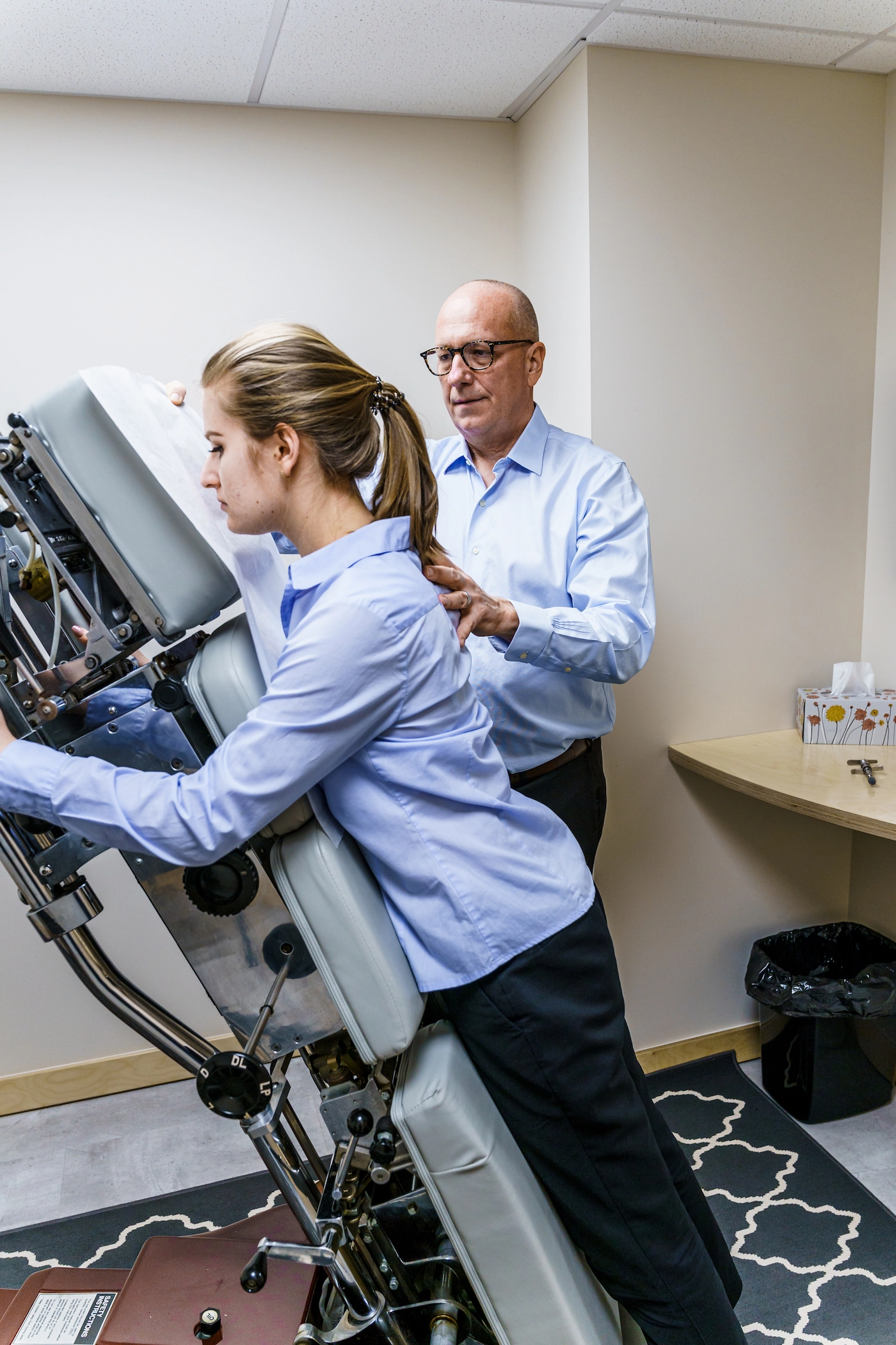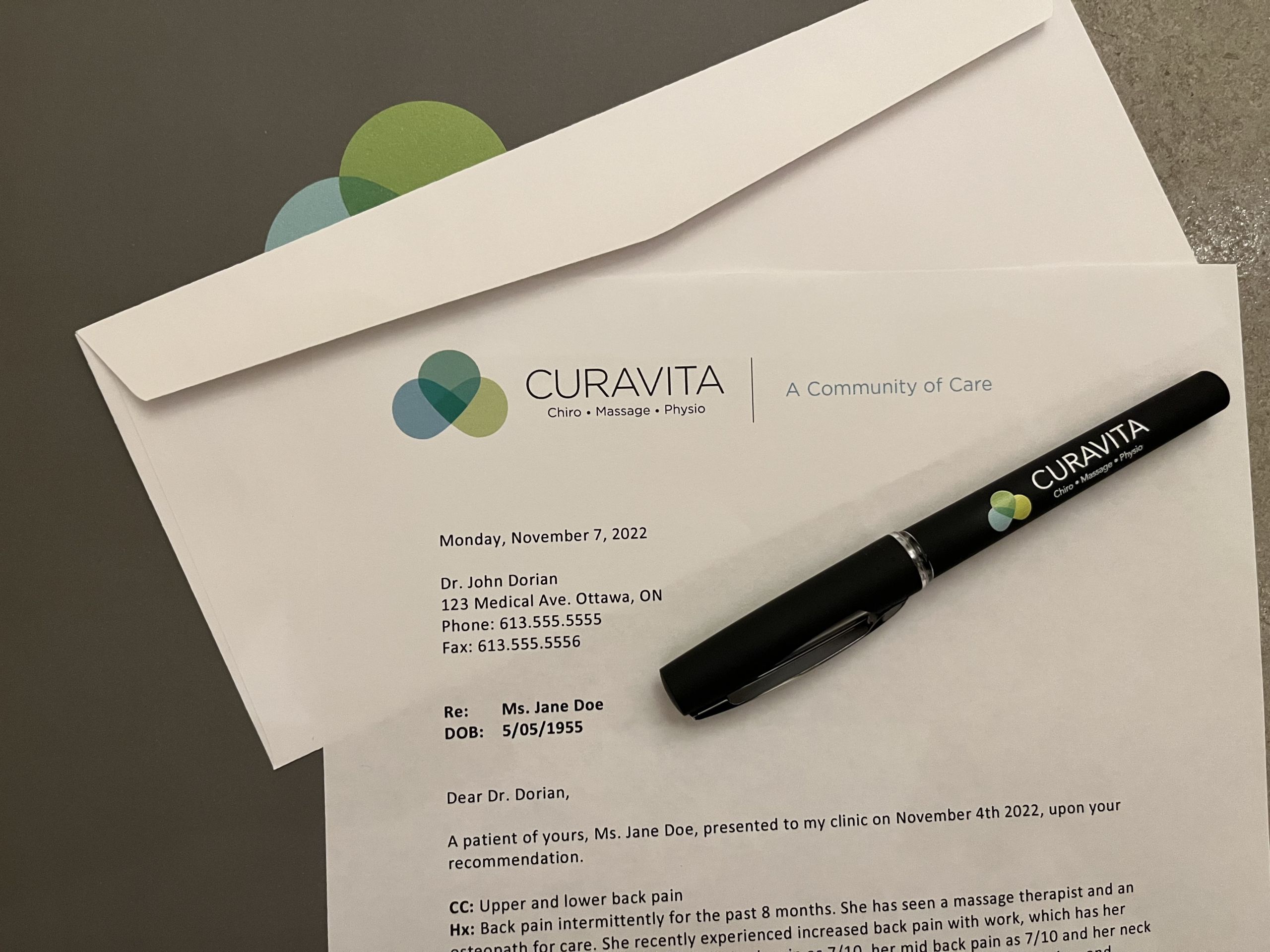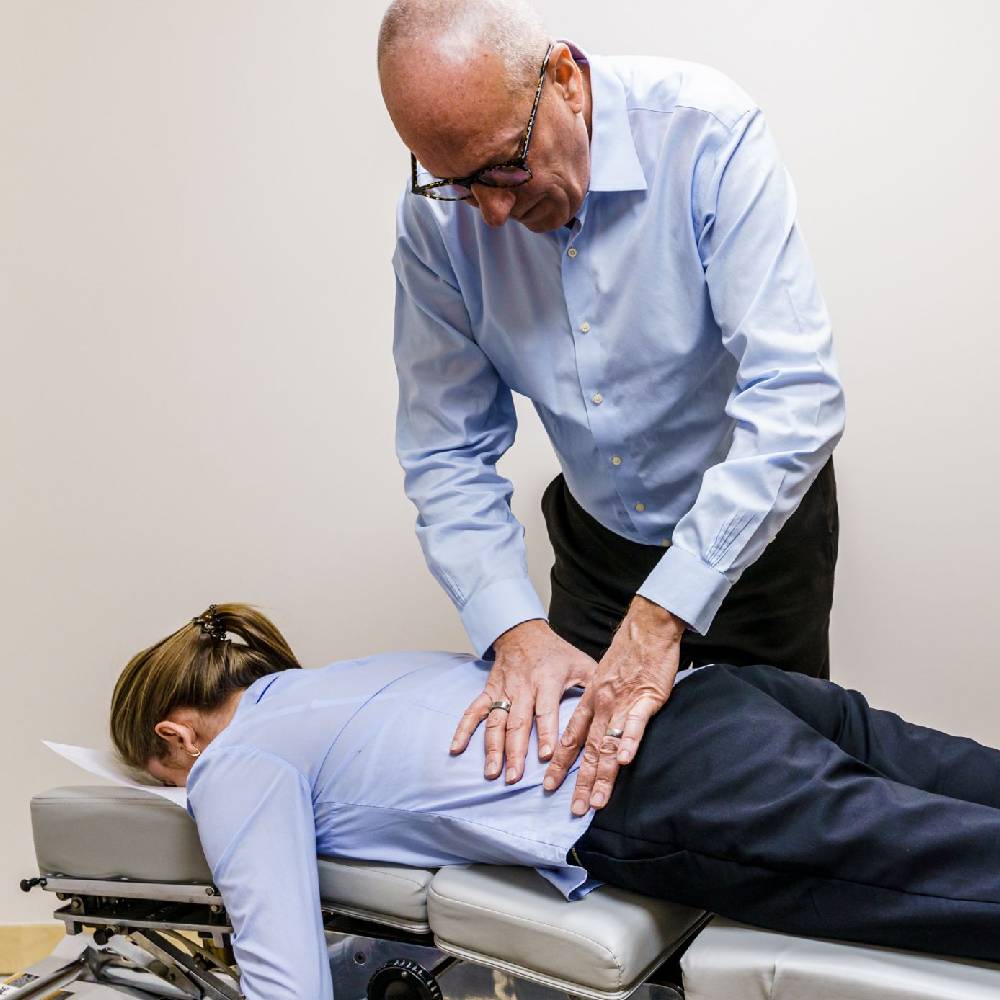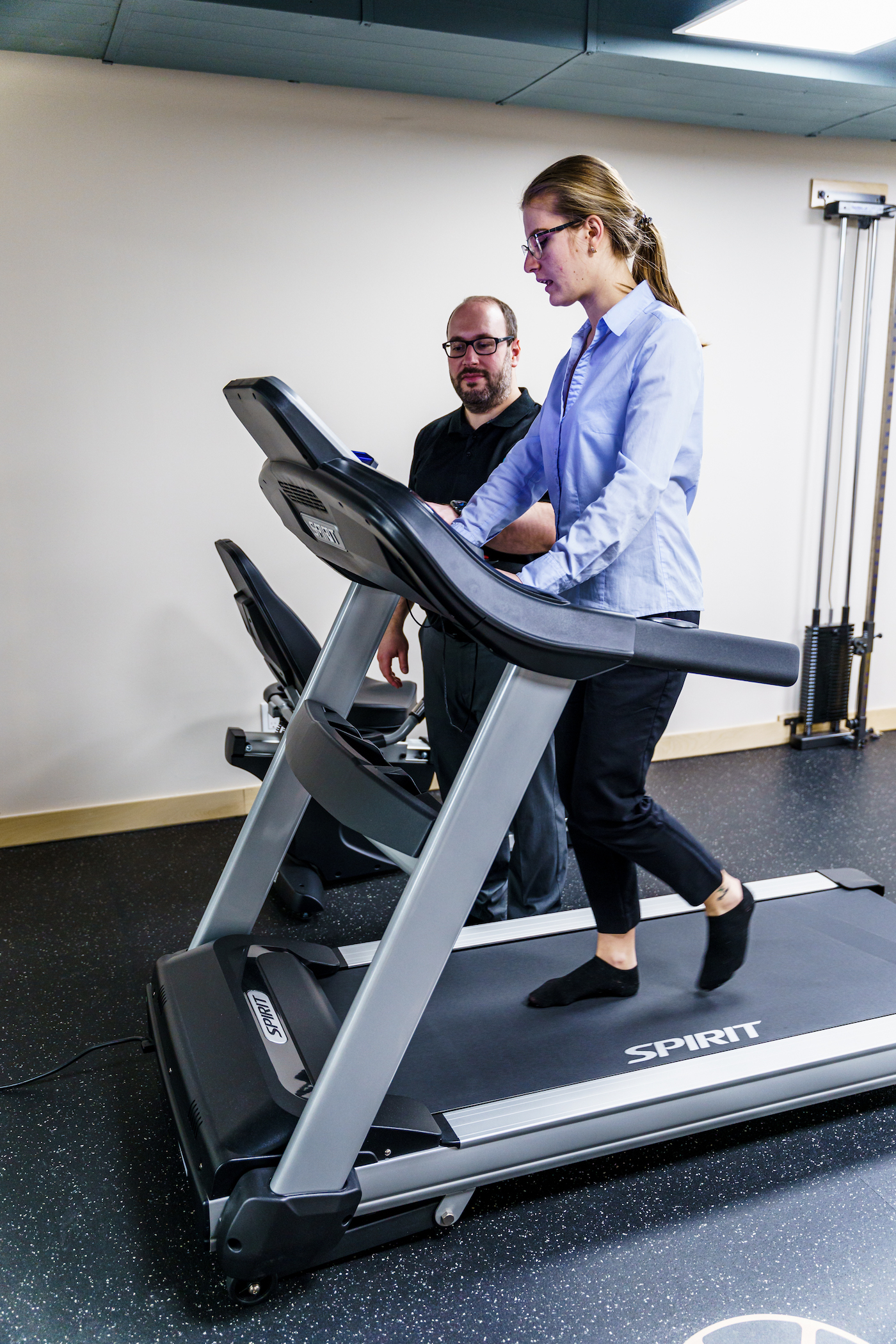Call for collaboration: excellent care for all
Our collaborative approach to chiropractic care within the Ottawa health and medical community is about putting patients first. Built on the foundation of our core values of trust, respect, and honesty, we uphold this collaborative approach through mutual respect with both medical professionals and our patients. This mutual respect is our gold standard for providing quality family health care. We believe this collaborative effort advances the quality of care in family health and wellness and results in excellent care for all.
Our chiropractors work in partnership with all medical and health care professionals in Ottawa, and across Ontario and Quebec in an inclusive manner. With much evidence confirming the positive outcomes of a collaborative health care approach, our aim is to provide a trusted, seamless and patient-centered process.
In addition, as part of our chiropractic collaborative initiative, CURAVITA offers outreach opportunities such as interactive lunch-and-learns, round table discussions, Q&A sessions and case study presentations to various health care partners in the Ottawa region. To learn more about our evidence-based approach to patient care, medical and healthcare professionals are encouraged to:
Contact our office to speak with our CEO, Dr. Ken Brough or book an outreach session.
Stay connected with us on the latest scientific musculoskeletal research through our CURAVITA Connect
Our Chiropractors provide medical professionals with a complete evidence-based Musculoskeletal Chiropractic Report regarding their patient’s chiropractic care and prognosis. A complete synopsis outlining examination findings, x-ray interpretation and diagnosis are included along with follow-up and discharge reports.
We work together with you by providing excellence in chiropractic and patient-centered care. As your trusted collaborative health care professional, see below for some examples of the reports we send you.
To learn more, medical and healthcare professionals are welcome to contact our office to speak with CURAVITA’s CEO, Dr. Ken Brough.
In today’s healthcare system, innovative solutions to improve patient-centered care are on the rise. In Ontario, a common theme in new health care strategies is the emphasis on coordinated and integrated team-based care. In settings like Family Health Teams (FHTs), Nurse Practitioner-Led Clinics (NPLCs), Aboriginal Health Access Centers (AHACs) and Community Health Centres (CHCs), health professionals are collaborating to provide patient-centered care.
Health care providers have been operating distinct from one another and without sufficient communication, especially as it pertains to shared patients. This lack of coordination has negative outcomes including disjointed care pathways and less timely access to care for patients.
Musculoskeletal (MSK) conditions, specifically low back pain (LBP), pose a significant challenge in Ontario, and beyond. Some facts of note include:
- Approximately 20% of Ontarians report having chronic LBP2
- 14-28% of primary care physician visits in North America are for MSK symptoms3
- LBP is now the leading cause of disability worldwide; contributing 10.7% of years lived with a disability. MSK conditions rank second, contributing 21.3% of years lived with a disability4
- Numerous studies have established spinal manipulative therapy (SMT), the primary therapeutic procedure used by chiropractors, as an appropriate and effective intervention for MSK and LBP patients.5 These studies have shown that SMT is effective in adults with acute and chronic LBP, and a variety of extremity joint disorders. SMT is also a recommended treatment in many LBP clinical practice guidelines.6
- The government of Ontario and health system players are working together to improve the future of healthcare delivery. Chiropractors are a key component in this shift to team-based, collaborative care. Chiropractors are now eligible to be team members in primary care team settings (FHTs, NPLCs, AHACs, CHCs) to provide care to teams’ patient populations.
- Strong and trusting relationships between chiropractors and primary care physicians bolster care coordination and accessibility of chiropractic services for patients.
Collaboration between chiropractors and other health professionals is publicly recognized as part of the solution in coordinated health care delivery. As experts in conservative care management of MSK disorders, chiropractors can effectively support the needs of MSK patients in concert with their primary care provider to alleviate some systemic pressures. Recent developments in the province, such as the MOHLTC’s LBP Strategy7 in which chiropractors play an integral role, is evidence that there is an appetite among Ontario’s health care professionals to work with chiropractors in the management of MSK patients.
REFERENCES
Ontario Chiropractic Association: Collaboration Ready Toolkit, Version 1, February 2104. http://www.chiropractic.on.ca.
Statistics Canada, Government of Canada, (2010). Canadian community health survey: Annual component, 2010
Piney, S., & Regan, W. (2001). Educating medical students about musculoskeletal problems. Are community needs reflected in the curricula of Canadian medical schools? Journal of Bone and Joint Surgery, 83(9), 1317-1320
Vos, T., Flaxman, A., Naghavi, M., Lozano, R., Michaud, C., Ezzati, M.… Murray, C. (2012). Years lived with disability (ylds) for 1160 sequelae of 289 diseases and injuries 1990—2010: A systematic analysis for the global burden of disease study 2010. The Lancet, 380(9859), 2163 – 2196.
UK BEAM Trial Team. (2004). United Kingdom Back Pain Exercise and Manipulation (UK BEAM) randomized trial: Effectiveness of physical treatments for back pain in primary care. British Medical Journal, (7479), 1377.
Toward Optimized Practice and Institute of Health Economics, (2011). Guideline for the evidence-informed primary care management of low back pain. Retrieved from http://www.topalbertadoctors.org/cpgs/?sid=65&cpg_cats=90
http://www.health.gov.on.ca/en/pro/programs/ecfa/action/primary/lb_edutools.aspx







